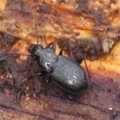Підтримуємо Вільну Україну
 We Support Free Ukraine
We Support Free Ukraine

Biodiversity Map
Taxa

Bothriopterus — subordinate taxa:
Taxon count: 2
-
Arthropodaphylum
Click to switch
to select orders
and filters > -
Hexapodasubphylum
Click to switch
to select orders
and filters > -
Insectaclass
Click to switch
to select orders
and filters > -
Coleopteraorder
Click to set
as the main taxon
and as a base
← of the left panel > -
Adephagasuborder
Click to set
as the main taxon
and as a base
← of the left panel > -
Carabidaefamily
Click to set
as the main taxon
and as a base
← of the left panel > -
Harpalinaesubfamily
Click to set
as the main taxon
and as a base
← of the left panel > -
Pterostichinitribe
Click to set
as the main taxon
and as a base
← of the left panel > -
Pterostichusgenus
Click to set
as the main taxon
and as a base
← of the left panel > -
Bothriopterussubgenus
Click to set
as the main taxon
and as a base
← of the left panel > -
Pterostichus oblongopunctatusspecies
Click to set
as the main taxon
and as a base
← of the left panel >
←Set as a base
of the left panel subspecies: Pterostichus (Bothriopterus) oblongopunctatus oblongopunctatus
of the left panel subspecies: Pterostichus (Bothriopterus) oblongopunctatus oblongopunctatus
PL
YES
name status: valid name
BioMap ID: 1003673
taxon code: 280
taxonomy checked: YES
Data on distribution in Poland

Statistics
- Records: 1485
- Publications: 120
- Collections: 13
- Publication authors: 98
- Illustrations (iconography): 1
- Photos (specimen/observation): 3
Taxon description
Pospolity gatunek leśny, rozprzestrzeniony szeroko w Europie od północnej części Hiszpanii, środkowych Włoch, Bułgarii aż do dalekiej północy w Fennoskandii (w Norwegii do 70° szer. geogr.), wykazywany również z Kaukazu, Syberii i Japonii. Zasiedla gleby humusowe, przeważnie w lasach liściastych i mieszanych, ale również. Zamieszkuje czyste lasy świerkowe, docierając w górach do górnej granicy lasu. Spotykany przeważnie pod liśćmi, wśród mchu, pod obluźnioną korą pniaków, kłód i powalonych drzew (zwłaszcza na zimowiskach). W Polsce występuje wszędzie, w zbiorach krajowych znajdują się okazy dowodowe ze wszystkich krain.
Illustrations
... browse
 Pterostichus
Pterostichusoblongopunctatus
oblongopunctatus
Photos
... browse
 Pterostichus
Pterostichusoblongopunctatus
oblongopunctatus
 Pterostichus
Pterostichusoblongopunctatus
oblongopunctatus
 Pterostichus
Pterostichusoblongopunctatus
oblongopunctatus
External data sources
- Ostatnie rekordy
-
1140398
 ⊡
⊡ Carabidae: Pterostichus oblongopunctatus oblongopunctatus, PL, Pojezierze Pomorskie, Pojezierze Południowopomorskie, Równina Charzykowska, P.N. Borów Tucholskich, pomorskie, Chojnice, Chojnice w., ad Bachorze, UTM XV66, 1998 (Gutowski et al. 2005a)
Carabidae: Pterostichus oblongopunctatus oblongopunctatus, PL, Pojezierze Pomorskie, Pojezierze Południowopomorskie, Równina Charzykowska, P.N. Borów Tucholskich, pomorskie, Chojnice, Chojnice w., ad Bachorze, UTM XV66, 1998 (Gutowski et al. 2005a) -
1140397
 ⊡
⊡ Carabidae: Pterostichus oblongopunctatus oblongopunctatus, PL, Pojezierze Pomorskie, Pojezierze Południowopomorskie, Bory Tucholskie, nadl. Osie, Wdecki P.K., kujawsko-pomorskie, Świecie, Osie, ad Osie, UTM CE24, 1998 (Gutowski et al. 2005a)
Carabidae: Pterostichus oblongopunctatus oblongopunctatus, PL, Pojezierze Pomorskie, Pojezierze Południowopomorskie, Bory Tucholskie, nadl. Osie, Wdecki P.K., kujawsko-pomorskie, Świecie, Osie, ad Osie, UTM CE24, 1998 (Gutowski et al. 2005a) -
1140396
 ⊡
⊡ Carabidae: Pterostichus oblongopunctatus oblongopunctatus, PL, Pojezierze Pomorskie, Pojezierze Południowopomorskie, Bory Tucholskie, Zaborski P.K., pomorskie, Chojnice, Brusy, ad Laska, UTM XV67, 1998 (Gutowski et al. 2005a)
Carabidae: Pterostichus oblongopunctatus oblongopunctatus, PL, Pojezierze Pomorskie, Pojezierze Południowopomorskie, Bory Tucholskie, Zaborski P.K., pomorskie, Chojnice, Brusy, ad Laska, UTM XV67, 1998 (Gutowski et al. 2005a) -
1115250
 ⊡
⊡ Carabidae: Pterostichus oblongopunctatus oblongopunctatus, PL, Wyżyna Krakowsko-Wieluńska, Brama Krakowska, Obniżenie Cholerzyńskie, Tenczyński P.K., małopolskie, Kraków, Zabierzów, Szczyglice, UTM DA14, 2019, leg. M. Syratt
Carabidae: Pterostichus oblongopunctatus oblongopunctatus, PL, Wyżyna Krakowsko-Wieluńska, Brama Krakowska, Obniżenie Cholerzyńskie, Tenczyński P.K., małopolskie, Kraków, Zabierzów, Szczyglice, UTM DA14, 2019, leg. M. Syratt -
1111288
 ⊡
⊡ Carabidae: Pterostichus oblongopunctatus oblongopunctatus, PL, Beskid Zachodni, Siepraw, UTM DA23, 2009, leg. M. Józefczyk
Carabidae: Pterostichus oblongopunctatus oblongopunctatus, PL, Beskid Zachodni, Siepraw, UTM DA23, 2009, leg. M. Józefczyk -
1035325
 ⊡
⊡ Carabidae: Pterostichus oblongopunctatus oblongopunctatus, PL, Nizina Wielkopolsko-Kujawska, lubuskie, Słubice, Słubice, rez. Łęgi koło Słubic, UTM VT79, 2018, leg. M. Adamski
Carabidae: Pterostichus oblongopunctatus oblongopunctatus, PL, Nizina Wielkopolsko-Kujawska, lubuskie, Słubice, Słubice, rez. Łęgi koło Słubic, UTM VT79, 2018, leg. M. Adamski -
1033979
 ⊡
⊡ Carabidae: Pterostichus oblongopunctatus oblongopunctatus, PL, Nizina Wielkopolsko-Kujawska, lubuskie, Słubice, Słubice, rez. Łęgi koło Słubic, UTM VU60, 2017
Carabidae: Pterostichus oblongopunctatus oblongopunctatus, PL, Nizina Wielkopolsko-Kujawska, lubuskie, Słubice, Słubice, rez. Łęgi koło Słubic, UTM VU60, 2017 -
972011
 ×
× Carabidae: Pterostichus oblongopunctatus oblongopunctatus, Tatry, coll. MiIZ PAN: Tenenbaum Sz.
Carabidae: Pterostichus oblongopunctatus oblongopunctatus, Tatry, coll. MiIZ PAN: Tenenbaum Sz. -
972010
 ×
× Carabidae: Pterostichus oblongopunctatus oblongopunctatus, Tatry, coll. MiIZ PAN: Tenenbaum Sz.
Carabidae: Pterostichus oblongopunctatus oblongopunctatus, Tatry, coll. MiIZ PAN: Tenenbaum Sz. -
972009
 ×
× Carabidae: Pterostichus oblongopunctatus oblongopunctatus, Tatry, coll. MiIZ PAN: Tenenbaum Sz.
Carabidae: Pterostichus oblongopunctatus oblongopunctatus, Tatry, coll. MiIZ PAN: Tenenbaum Sz. - ... more
- Powiązane publikacje
-
Twardowski J., Thoma P. 2011. Biegaczowate (Col, Carabidae) występujące w rezerwacie przyrody „Zwierzyniec” i jego otulinie. [In:] Biegaczowate i inne bezkręgowce w badaniach środowiskowych. 12-te Sympozjum Polskich Karabidologów. Materiały konferencyjne. Olsztyn, 19–22 VI 2011. pp. 34.
 Show records
Show records -
Kosewska A., Nietupski M., Laszczak-Dawid A., Ciepielewska D. 2011a. Naziemna fauna biegaczowatych (Col., Carabidae) występująca w uprawach rzepaku ozimego.
 Show records
Show records -
Sienkiewicz P., Lipa J.J. 2010. Chrząszcze z rodziny biegaczowatych (Coleoptera: Carabidae) jako żywiciele pasożytniczych i komensalicznych eugregaryn (Apicomplexa: Eugregarinorida) – przegląd badań z terenu Polski. Wiad. Entomol., 29(4):289-295.
 full text
full text Show records
Show records -
Huruk S., Huruk A. 2010. Zgrupowania biegaczowatych (Coleoptera: Carabidae) borów sosnowych oraz jodłowych w Górach Świętokrzyskich. Wiad. Entomol., 29(4):247-258.
 full text
full text Show records
Show records -
Gutowski J.M., Kubisz D., Sućko K., Zub K. 2010b. Sukcesja saproksylicznych chrząszczy (Coleoptera) na powierzchniach pohuraganowych w drzewostanach sosnowych Puszczy Piskiej. Leś. Pr. Bad., 71:279-298.
 Show records
Show records - ... more






